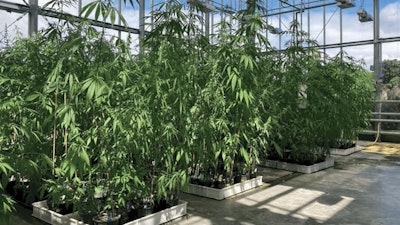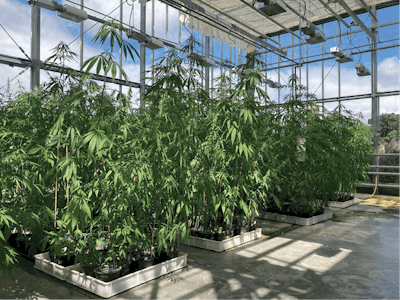

FINOLA is one of the most well-known hemp varieties available on the market. Developed in Finland, it’s one of the most popular hemp varieties grown in Canada, according to a paper published in Agronomy.
FINOLA is an autoflowering variety, which means that instead of flowering after a set period of darkness (like many day length-sensitive genetics available today), it flowers after an amount of time that isn’t dependent on light levels. This allows the variety to be grown across a broader range of latitudes outdoors than its day length-sensitive counterparts.
Despite the variety’s popularity, though, little is known about the genetics behind its autoflowering mechanisms. If specific amounts of time in darkness do not trigger this—and other autoflowering varieties—to flower, then what does?
Researchers at University College Dublin are trying to pinpoint the exact genes that control flowering times in FINOLA, which could eventually translate to identifying these genes in all autoflowering hemp varieties.
“We hope [these insights] can feed into breeding applications,” says Susanne Schilling, Ph.D., an assistant professor in the university’s School of Biology and Environmental Science.
Initial Research
Schilling has been leading the experiment along with Rainer Melzer, Ph.D., a fellow assistant professor in the college, while Ph.D. student Caroline Dowling has been working closely with them on the project.
The researchers chose to work with FINOLA because of its popularity, particularly for its industrial applications in northern climates.
“Especially if you’re in a climate like Ireland with relatively short summers, plants need to grow and flower straight away so you can generate the seeds for hemp oil,” Schilling says.
To conduct the research, Dowling produced 250 seedlings from crosses between FINOLA, an early flowering variety, and Felina 32, a day length-sensitive variety from France that has a longer flowering time and potential for whole-plant use.
“Obviously there is a genetic difference between the two [varieties],” Melzer says. “To find that particular difference is like finding a needle in a haystack, because thousands of their genes differ. What we need to try to do is identify the genes responsible for autoflowering and separate them from the rest of the haystack.”
Throughout the 2020 season, Dowling grew the clones in a greenhouse, where she observed the plants every few days to see which ones had begun to flower. Dowling says she observed “a spectrum of different flowering times” across the population.
Melzer compares this to height in people—a short person who has children with a tall person would likely produce offspring with a spectrum of different heights. (Researchers have found that height in people isn’t controlled by just one gene—it’s a result of thousands of genes interplaying with one another, according to a study in Nature Genetics.)
After the growing season, the researchers isolated DNA from plant samples and sent it away for genome sequencing.
Now that they’ve received the data, the researchers will take the plants that flowered early—a trait passed down from the FINOLA variety—and observe their genetic makeup to try to find the specific genes that made them flower early. (Early flowering is generally linked with autoflowering genetics.) “We want to link phenotype [physical appearance] with genotype [genetic makeup],” Schilling says.
They anticipate completing the analysis this summer.
Implications and Limitations
While autoflowering genetics are known for their ability to grow across a broad range of geographic regions, Schilling explains that these varieties aren’t necessarily ideal for everyone. “It depends on what you want to do with your crop,” she says. Farmers growing hemp for flower in California, for example, may be better served with a day length-sensitive variety, as the state has a variety of latitudes at which to grow. These varieties also typically flower later than autoflowering varieties, the researchers say, allowing them to bulk up and eventually produce higher yields.
And while it is true that autoflowering genetics could be grown across a wide range of latitudes since they’re not dependent on day length, Melzer notes their viability is still limited by other typical cultivation factors, such as climate. For example, autoflowering varieties couldn’t be grown outdoors in northern Canada because of the temperature (although they could be grown indoors without light deprivation shading).
Still, autoflowering genetics offer cultivation opportunities to farmers in areas that do not yet have genetics optimized for their latitudes (which dictate day length).
Melzer points out that identifying the genes that control autoflowering could take time. Much like human height, hemp flowering times may be dictated by a network of genes. And the genes that control this trait in FINOLA may be different than those controlling it in other autoflowering varieties.
But identifying these genes could eventually provide major advantages to breeders and, in turn, to farmers. It’s something that has garnered the interest of the Irish Research Council and Environmental Protection Agency in Ireland, which together provided nearly $200,000 in funding for the project, Melzer says.
“If we’re going to expand the cultivation of hemp, we need to alter flowering time to account for different latitudes,” Dowling says. “By understanding flowering time and the variations of these genes, we can produce new lines that are directly tailored for a particular climate and latitude.”
















